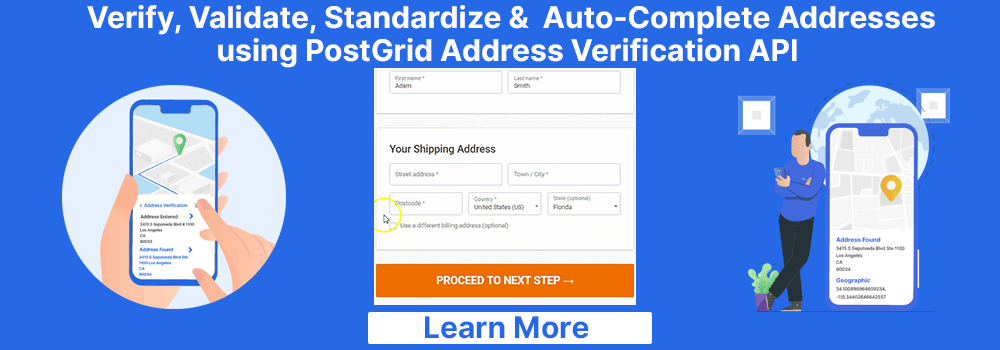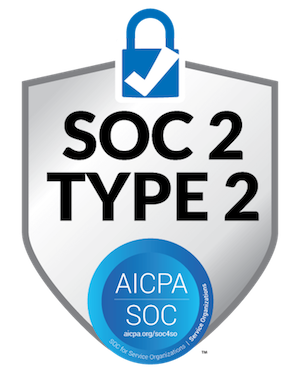
Correos Address Validation: How Does It Work, Limitations and Its Alternatives
Correos, Spain’s national postal service, was established in 1716 during the Spanish Empire era. In 2020, Correos had nearly 8,400 delivery points nationwide to provide extensive postal coverage. A Deloitte report suggests that 55 to 75% of all businesses fail to meet their objectives, often due to poor data quality.
How can we address the issue of poor data when sending mail or parcels in Spain via Correos? Invalid, incomplete, or outdated addresses serve as major obstacles to successful delivery, effective marketing campaigns, and location-based business intelligence. Corres tackles this challenge with its address validation tools that help ensure data accuracy against official records. Are these tools sufficient to guarantee deliverability? This blog will provide insights into Correos address validation, explore better alternatives, and outline the correct Spanish address format.

Key Takeaways
- Correos address validation helps in validating postal addresses against official records.
- Correos offers a postal code finder to fetch PIN codes for street addresses.
- Business users can rent their postal code and marketing database on contracts.
- You cannot expect geocoding, autocomplete, and real-time validation with Correos.
- Correos online tool helps you locate a post office, a post box, and CityPaq near you.
- Spanish addresses rely on using provinces to identify smaller towns in the country.
- Correos online tools don’t help you standardize address data.
- Businesses can’t run bulk validation workflows with correos.
What is Correos Address Validation?
It refers to cross-verifying that a postal address exists and has all the necessary information for successful delivery. Correos, the official postal service of Spain, is responsible for managing the country’s standardized format and address database.
Correos address validation tools help you check the deliverability of mail items, reduce delays, and gather mapping data for your business. Sadly, Correos doesn’t provide a comprehensive online solution to validate, standardize, autocomplete, or cleanse your address data. You can visit their official website only to use the postcode finder tool that accepts street names, numbers, and cities as input.
Correos might provide marketing or postal code central databases on contract, but they are expensive and don’t provide real-time data. You also don’t get features like geocoding, autocomplete, and API integrations. The best bet is to use a third-party solution that offers comprehensive services to validate, standardize, parse, autocomplete, and cleanse.
How Does Correos Address Validation Work?
Correos doesn’t provide a comprehensive solution to validate addresses in Spain. However, it does offer some tools to find precise PIN codes, delivery points, post offices, post boxes, and CityPaqs. Businesses can use these services to streamline their delivery and other operations to some extent.
Item Tracking
Individuals and businesses can visit Correo’s official website and enter their unique item tracking number to retrieve the last known location of a mail piece or package. This gives them a fair idea of where the mail item is going and how long it will take to deliver.
Postal Code Finder
Correos online address validation tools help you locate precise postal codes of street addresses. It will provide you with suggestions after you enter an address. The map is also a helpful addition for having an approximate estimation of the location. However, as you can see below, we had to type a correct street address in the proper sequence and with accurate spellings to fetch these results. Any mistake, incomplete input, or inconsistent data won’t give you the postal code data.
Post Office, Post Box, and CityPaq Locator
Correos offers another service to locate their post offices, post boxes, and CityPaq (automated parcel lockers) for better accessibility and convenience. You only need to type a proper address to fetch the precise location and pinpoint it on a map. Individuals and businesses often rely on this service to locate the nearest mailing locations. However, the same problem exists; you need to write an accurate address with no spelling or sequence mistakes. Corres might provide an autocomplete feature, but you have to be very careful with spelling.
Postal Code Database Contract
Business users can rent Correos’ entire postal code database of Spain and Andorra to streamline deliveries, marketing campaigns, or location intelligence efforts. It helps codify and standardize the new addresses you add to your database. This official database also contains various sociodemographic and economic indicators, which are vital for businesses to run their operations. However, the prices are exorbitantly high, starting from € 831.80. It might not be a feasible option for smaller companies with limited budgets.
Marketing Database
Correos also sells a marketing database to help firms obtain quality information about their target customers. These databases could be helpful for both digital and physical campaigns, providing better customer acquisition, loyalty, and distribution. The pricing starts from €687.44 (excluding taxes) for a postcode database without updates. Even if you buy a plan with updates, real-time data is absent. You can only download the database locally and get periodic updates, which means businesses do not receive real-time updates.
City Office and CityPaq Database
Businesses with multiple locations can use the Correos Offices and CityPaq database for free. It provides complete location and timings of their parcel delivery offices and accessible CityPaqs. The postal service offers a web service or SFTP files for businesses to use for better accessibility. You can get the file in CSV, XLS, and TXT formats to integrate with your systems.
Addressing Tips for Sending Envelopes and Parcels to Spain
- Abbreviations: Spain’s postal service uses various abbreviations for specific address components. It uses Apartado de Corres (A.C.) for the Post Office box, Calle (C/) for the street, and No for the number (building number).
- Language: Domestic addresses are typically written in Spanish since it is the official language of Spain. However, English is acceptable for international mail.
- Use of Province: Spanish addresses use province names to identify smaller towns in the country.
Postal Code Usage: Don’t forget to add the five-digit postal code while writing addresses in Spain. You can use the Corres postal code finder tool to double-check with the address and its postal code.
Spain Address Format
Individuals and businesses must correctly write Spanish addresses in the officially accepted format. You can begin by writing the addressee’s full name on the first line. Then, mention the street name and house/building numbers. You can also write down the stairwell, floor, and door to provide secondary address data. Separate each address component with a comma to maintain consistency.
The next line must have a valid five-digit postal code and city name. Adding the province name could be necessary if you are writing the address of a smaller town in the next line. However, mail sent to larger cities like Madrid or Barcelona doesn’t need a province name. Lastly, write “ESP” in capital letters, denoting Spain for international mail.
Here is what the format should look like:
| Recipient Name
Street Address |
Your sample address would look like this:
| Sr. Juan Martínez García
Calle del Agua, 22 03550 Sant Joan d’Alacant Alicante ESP |
Why will your mail items not be delivered to recipients in Spain?
Incomplete or Invalid Address
Most Spanish addresses are easy to write, and Correos also provides guidelines for writing them properly. However, anyone unfamiliar with the country’s addresses can make mistakes, which can lead to delays, failures, and return mail. Writing rural addresses with specific provinces and postal codes is more challenging.
The Recipient Moved to a New Address
Being a first-world country, people often move their addresses for better homes. It can make your address database every year. The Spanish government offers an online service for its citizens to notify various authorities and businesses about address changes. However, reflecting these changes in the official database takes time, leading to delivery delays or failures. Businesses must constantly update their addresses before sending mail items.
Recipient Was Absent
Sometimes, the intended addressee might not be present at the delivery location. It could result from a busy schedule or you making a mistake in the address. The Spanish postal workers try their best to deliver mail to the specific address. However, your mail will remain undelivered if it requires a signature or if the drop-off location is insecure.
Package Lost or Misrouted
The mail item could get lost or misplaced if you make significant mistakes while writing the address. For example, a single-digit difference in the PIN code might send your package to a different locality or province. You can only use their package lost service in such a scenario.
 Also Read: Best Address Verification Software
Also Read: Best Address Verification SoftwareLimitations of Correoes Address Validation
Requires You to Enter a Precise Street Address
You can only obtain the PIN code of a Spanish postal address by using the Correos address validation online tool. It also requires you to provide a proper address, sequence, and correct spellings to fetch results. Individuals and businesses can’t do much to determine the precise location, even if they get an accurate pincode, since each pincode consists of thousands of delivery points.
Linguistic Barriers
Spanish addresses might use the Latin script like English. However, there are many differences in how we write addresses. For example, Spain uses the abbreviations PO boxes, Street, and Avenue. A typical user might face roadblocks while reading these differences. Sadly, the Correos address validation tool doesn’t provide any provision to explain the linguistic gaps.
No Real-Time Address Validation
Individuals and businesses can only get postcode data information. They only provide downloadable databases, even if you buy their postal code or marketing datasets. The Correos address validation doesn’t occur in real-time, leaving the scope of inaccuracy and outdated data.
Lack of Address Standardization
Their postal code find does provide limited address standardization with autocomplete suggestions. However, it only gives you partial suggestions, leaving big mistakes unattended. Even the slightest typo in a street name can make you struggle with the Correos address validation tool. A user must enter the full address correctly to get a valid postal code, leading to a high chance of errors.
Absence of Geocoding Data
Correos doesn’t provide geographical coordinates with their address validation tool for mapping or business intelligence. The lack of latitude and longitude data makes it challenging to locate addresses on a map precisely. Finance and ecommerce businesses often require this data for customer onboarding and fraud reduction.
Unable to Support Bulk Validation Workflows
Most businesses rely on automated workflows for everyday operations. They don’t have the time to manually review data sets or use dedicated tools to validate addresses. Correos doesn’t offer integration options or bulk validation support to help streamline such workflows. You can utilize their postal code or marketing database to verify addresses manually, although this method is susceptible to human error.
No Provisions for Secondary Address Data
Premise-level data with secondary indicators like “floor,” “unit,” “building,” and “suite” helps provide supplementary information about postal addresses. This can improve delivery success and the precision of your address database. The Correos address validation tool doesn’t offer secondary address data to enrich your addresses.
Correos Address Validation Alternative
As mentioned above, Correos doesn’t provide a comprehensive solution to fetch real-time data for address validation or standardization. You must give proper street names, numbers, and cities to get accurate postal codes with their postal code finder tool. It doesn’t fix any spelling errors or improper sequence in postal addresses. Businesses can get Correos postal code or marketing database by paying at least €600, which is unfeasible for startup companies. The database only gets updates periodically, even if you pay this high price. A more brilliant alternative with superior accuracy and functionality is vital to ensure deliverability and valuable mapping data.
PostGrid’s Address Verification API is an excellent alternative that helps businesses validate, verify, autocomplete, geocode, parse, and standardize Spanish addresses with precision. It uses the national official database and other credible sources to make address validation and geocoding safe and reliable. Unlike Correos address validation tools, PostGrid offers real-time results, superior integration with your existing systems, and census data with geographic and demographic analysis. The pricing also remains flexible and suitable for businesses with different address verification needs.
Correos vs PostGrid Address Validation: Which is Superior?
| Criteria | Correos | PostGrid |
| Real-Time Address Validation | You can only fetch postal codes by entering the proper street names, numbers, and cities. | It provides real-time address validation and standardization by using multiple authoritative datasets. |
| Geocoding | Correos doesn’t provide any geocoding data for location intelligence. You can only rely on their marketing database. | Users can obtain geographical coordinates to pinpoint addresses on a map for superior intelligence. |
| Coverage | Correos address validation tools only cover locations in Spain. | You can verify and standardize addresses from 245+ countries and territories. |
| Scalability | Correos address validation doesn’t have bulk verification capabilities, limiting business scalability. | PostGrid can quickly validate and standardize high-volume addresses by accepting CSV or XLS files. |
| Pricing | Postal code finder service is free, but access to postal and marketing databases starts from €600. | PostGrid provides flexible pricing plans and even a pay-as-you-go model to save costs. |
| Integrations | Users have limited integrations to track packages and load postal code databases via web services. | PostGrid provides a RESTful API for integrating address validation tools into various CRMs, ERPs, HRMs, and more. |
| Address Autocomplete | Correos offers limited autocomplete suggestions with their postal code finder tool. | Users get up to 100 suggestions for each input to limit errors and save time entering addresses. |










